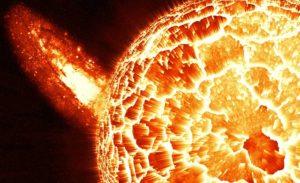We know that the sun holds a massive amount of potential and a massive amount of influence over our world. It has the power to energize out cities or black out our power grids at a moment’s notice.
NASA has, up to this point, been studying the sun from afar with satellites and telescopes, until this weekend, when the Parker Solar Probe will blast off from Cape Canaveral to help us understand our closest star.
The Parker Solar Probe will be getting up close and personal with the sun, getting within 4 million miles. For comparison, the closest a probe has ever gotten in the past was 27 million miles, which was the Helios-A in 1976
This amazing piece of technology will get well within the sun’s outer atmospheric layer called the Corona, which is both the hottest layer (3.5 million degrees fahrenheit) and the most explosive, causing solarwinds and flares that can disrupt satellites or even possibly black out power here on Earth.
The temperature inside the Parker Solar Probe? A pleasant 85 degrees thanks to the 4.5 inch thick metal covering that will protect all of the Parker’s sophisticated instruments from the intense heat.
The Parker will be orbiting the sun for 7 years, studying our star with technology to gauge magnetic fields, energized particles and a telescope camera to capture some truly awe inspiring photos.
We are extremely excited about what the Parker Solar Probe findings could mean for the future of solar power here on Earth.
We could go on and on about the technology of the Parker and how it works, but we think nobody says it better than NASA themselves! Plus they come in awesome video form!

